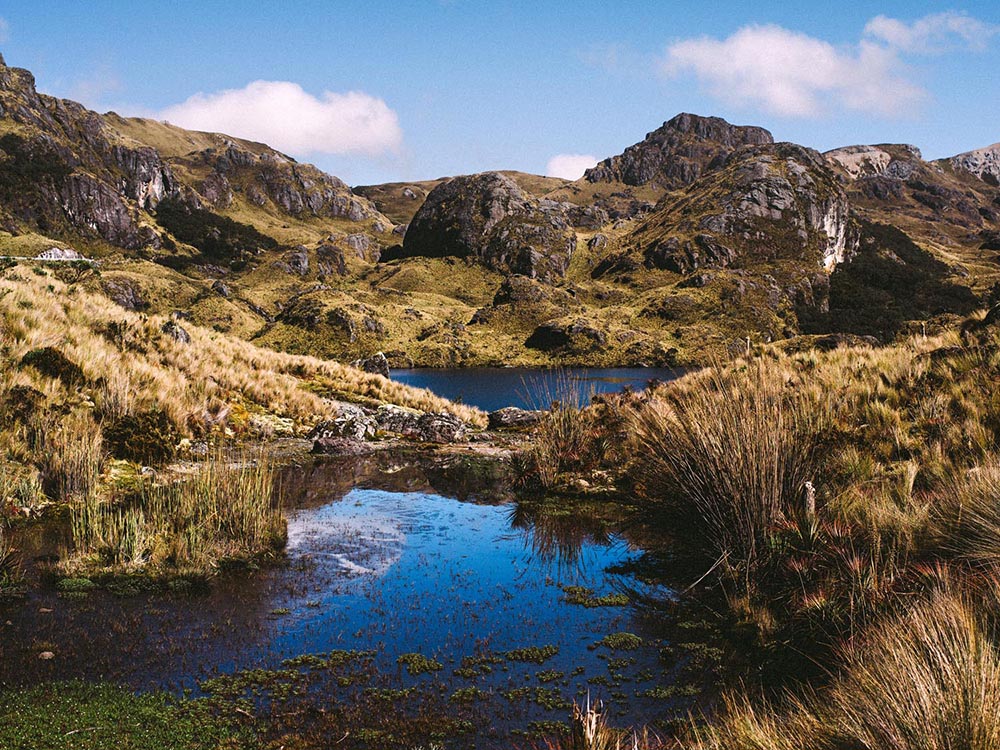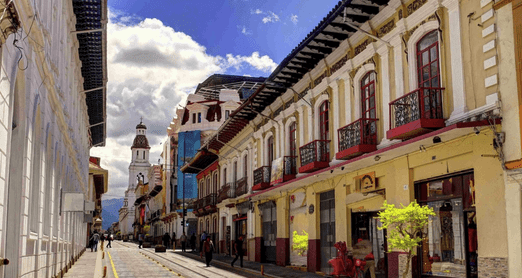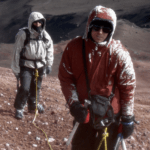Cuenca is an absolute gem that many backpackers consider one of South America’s most charming colonial cities. Nestled in Ecuador’s southern Andes at about 2,500 meters elevation, this UNESCO World Heritage site offers an incredible blend of history, culture, and natural beauty that’s perfect for budget travelers.
The historic center is simply stunning, with cobblestone streets winding between perfectly preserved Spanish colonial architecture. The iconic blue domes of the New Cathedral (Catedral de la Inmaculada Concepción) dominate the skyline, while the nearby Old Cathedral showcases beautiful indigenous stonework. You can easily spend days just wandering the atmospheric streets, discovering hidden plazas and admiring the wrought-iron balconies draped with colorful flowers.
For backpackers, Cuenca hits the sweet spot of being affordable while offering plenty to see and do. Hostels typically run $8-15 per night, and you can eat well for under $5 at local markets and small restaurants. The Mercado 10 de Agosto is fantastic for cheap, authentic meals and fresh produce.
The city is famous for its artisan crafts, particularly Panama hat weaving (yes, Panama hats actually originated in Ecuador). You can visit workshops to see master weavers at work and pick up authentic hats at reasonable prices. The neighborhood of Barranco along the Tomebamba River is perfect for sunset strolls, with its hanging houses and riverside walking paths.
Day trips from Cuenca are spectacular. Cajas National Park, just 30 minutes away, offers incredible hiking through páramo landscapes dotted with pristine lakes. The ruins of Ingapirca, Ecuador’s most significant Inca site, make for another excellent excursion.
The climate is wonderfully mild year-round – Cuenca is known as the “City of Eternal Spring” – making it comfortable for exploring on foot. The locals are genuinely friendly, and the city has a relaxed pace that’s perfect for unwinding between more intense travel legs. Many backpackers end up staying much longer than planned because Cuenca has this way of capturing your heart.
Pumamaqui Hotsprings of Cuenca
The hot springs around Cuenca are absolutely fantastic for backpackers looking to unwind after hiking or exploring. The area has several excellent options, each with its own character and price point.
Baños de Cuenca is the most accessible option, located just 7.5 miles to the west of Cuenca in a charming village nestled in the hills above the city. It has been almost eight decades since the use of the hot springs of this area for recreational and healing purposes began, so there’s a long tradition of thermal bathing here.
The two main hot spring complexes near Cuenca are Piedra de Agua and Termas Pumamaqui, and both offer great value for backpackers. Piedra de Agua is located 20 minutes from downtown Cuenca and is built almost entirely from limestone rock of volcanic origin carved out of the same location This creates a stunning natural aesthetic that combines stone, glass, and wood. The facility offers services based on thermal waters, vapors, and volcanic mud making it feel like a proper spa experience.
Termas Pumamaqui offers a more rustic, natural experience and is located 23 kilometers from the Golf Club at San Joaquin This one tends to be less crowded and more budget-friendly, perfect for backpackers who want to soak in natural pools surrounded by mountain scenery.
The waters at these hot springs are genuinely therapeutic – they’re heated by volcanic activity and rich in minerals that are great for sore muscles after long hikes. The temperature varies between pools, so you can find the perfect heat level for your comfort. Many backpackers find these springs especially rejuvenating after exploring Cajas National Park or doing other outdoor activities around Cuenca.
You can reach the hot springs by taxi (around $10-15 from Cuenca center), local bus, or even bike if you’re feeling adventurous. Most places are open daily and offer day passes that include access to multiple pools. It’s the perfect way to treat yourself without breaking your backpacker budget, and the mountain setting makes it feel like a truly special experience.
How to get to Cajas National Park
Cajas National Park is absolutely spectacular and surprisingly easy to reach independently from Cuenca! Only about 30 kilometers from Cuenca or an hour ride by bus , this páramo wonderland feels like stepping into another world with its windswept landscapes, crystalline lakes, and unique high-altitude ecosystem.
Getting to Cajas National Park Independently:
The most budget-friendly option is taking public buses. You can catch a Cooperativa Transporte Occidental bus from Terminal Terrestre or Feria Libre for $2. The company “Occidental” has regular buses to Cajas from around 0800 until 1600 most days from this terminal, though their office is a little difficult to find. Look for the tiny, lime green hole in the wall huddled in a corner at the end of the bus departure bay closest to the food court.
There’s also Atrain Alianza Buses | Find them near terminal 1 in the Terminal Terrestre Cuenca, main entrance way | Buses run: frequently all day from 1:30 – 23:59 with One way bus ticket cost: $3 | Duration: 1 hour 10 minutes.

What to Expect at Cajas National Park:
The park sits at over 3,000 meters elevation, so the weather can be unpredictable – bring layers! Entrance Fee for El Cajas National Park: Free to enter! Simply register at the Visitor Center at Laguna Toreadora. All you need is your name and age. It’s more of a booth than an actual Visitor Center facility.
Best Hikes at Cajas National Park:
The most popular and accessible trail is the Laguna Toreadora Loop – a 1.8-mile loop trail near Cuenca Canton, Azuay. Generally considered a moderately challenging route, it takes an average of 50 min to completeThis gives you a perfect taste of the park’s otherworldly landscape.
For a longer adventure, try the Laguna Llaviucu area, which offers more challenging hikes through the páramo ecosystem. The landscape here is reminiscent of Scottish highlands but at 4,000+ meters elevation, with over 270 lakes scattered throughout the park.
Practical Tips:
- Start early since Cajas National Park opens at 8 a.m.
- Weather changes rapidly – pack rain gear, warm layers, and sun protection
- Bring plenty of water and snacks
- The altitude can be challenging, so take it slow if you’re not acclimatized
- Return buses run until late afternoon, but confirm times when you arrive
The park is perfect for independent travelers who want to experience Ecuador’s unique high-altitude ecosystem without paying for expensive tours. The ethereal landscape of mist-shrouded lakes and rolling páramo makes it one of South America’s most distinctive national parks.
Jake is originally from Sydney and co-founded Ecuador Eco Adventure with Wlady back in 2006. Together they built one of the country's most prominent climbing and hiking agency that is number one in summit attempts of Chimborazo, Cotopaxi, Antisana, and Cayambe. Ecuador Eco Adventure has since been recommended in National Geographic Adventure, The Rough Guide, and the Lonely Planet.




0 Comments